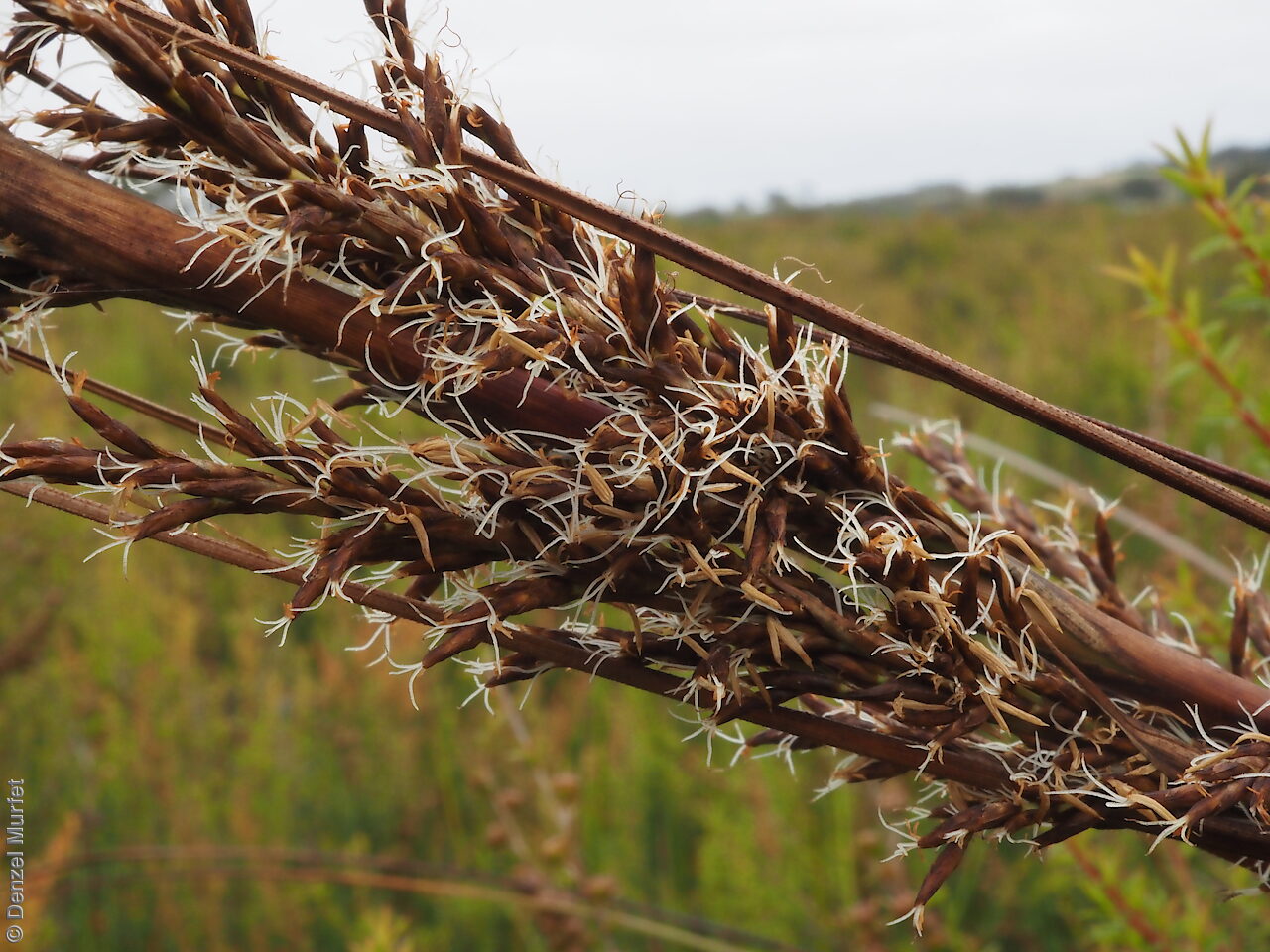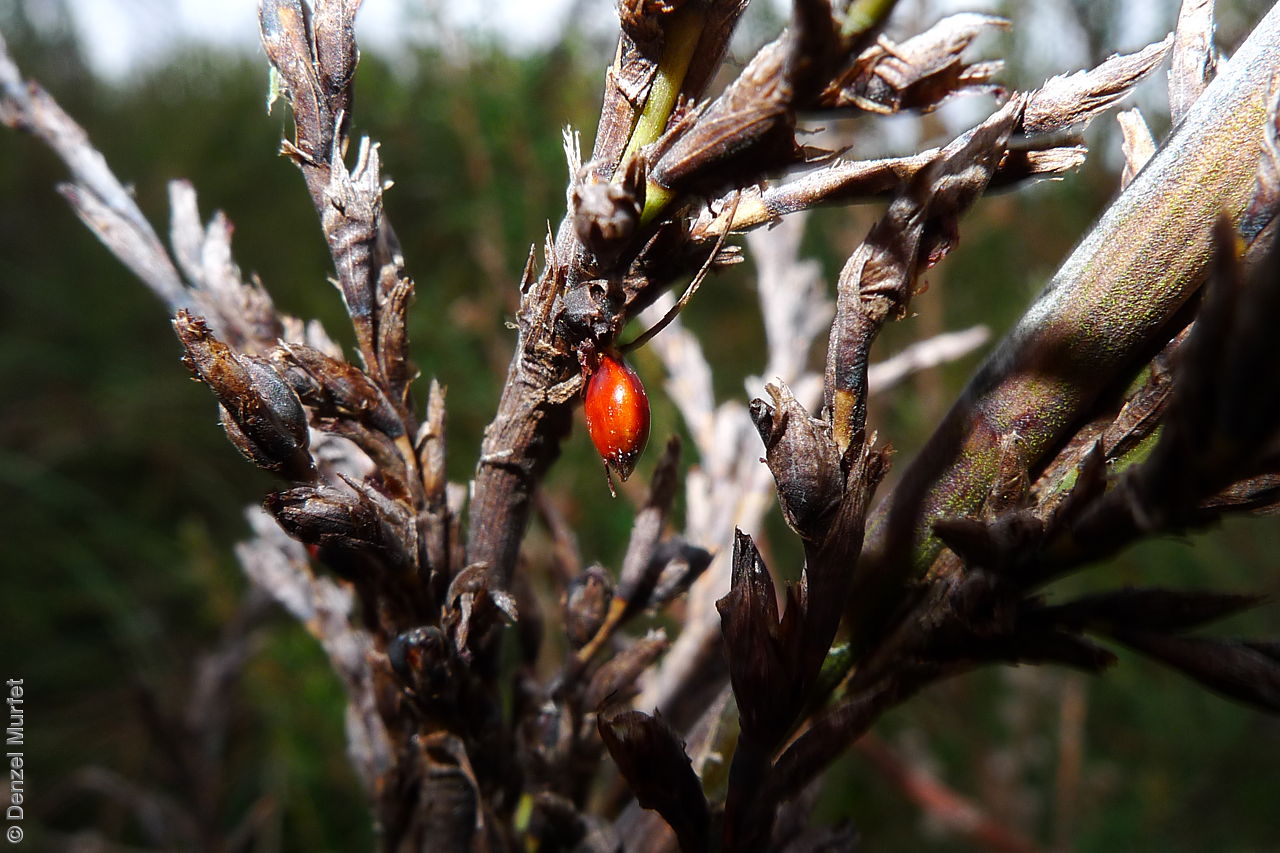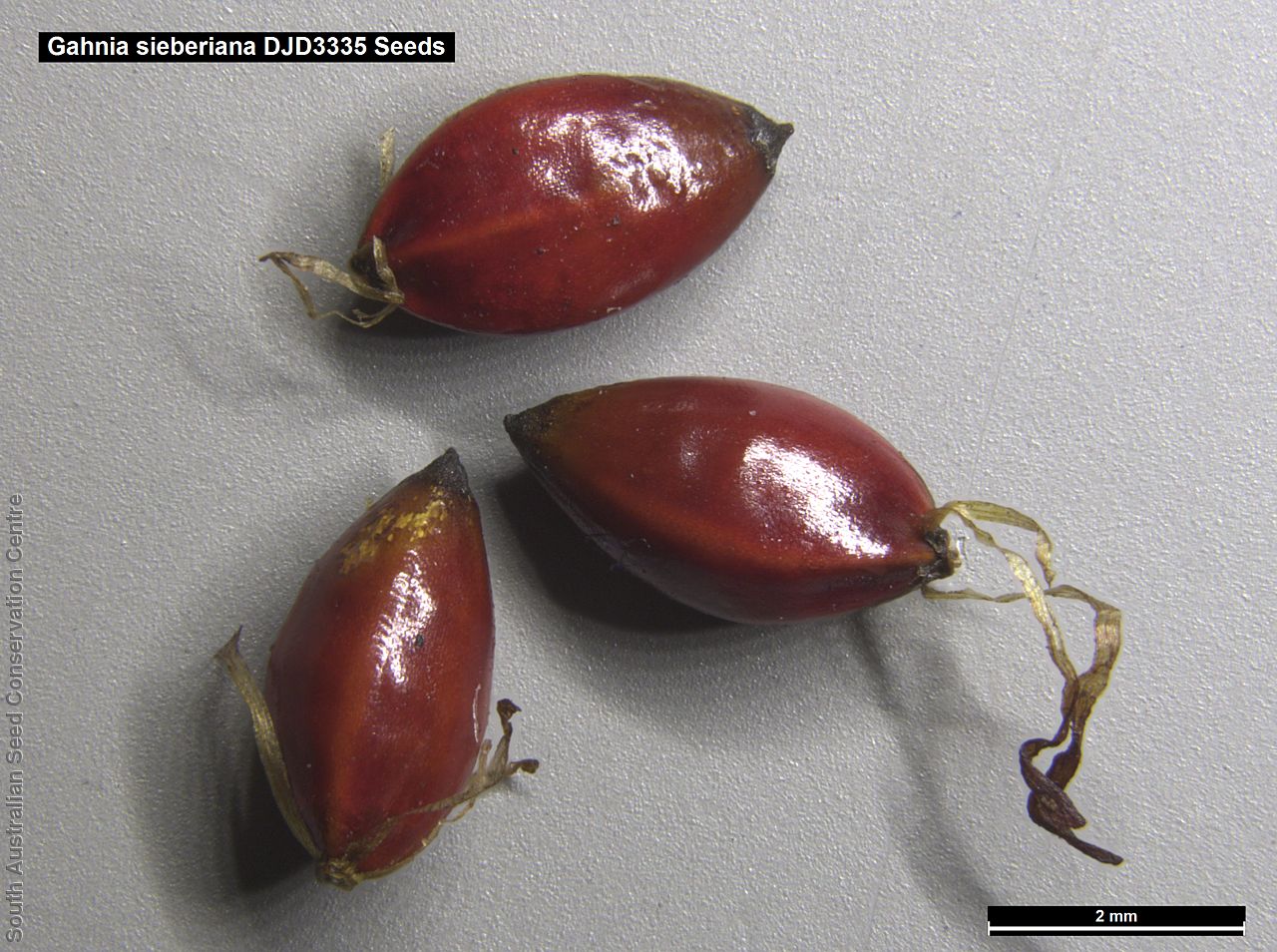
















Botanical art
Prior names
Gahnia sieberana, orth.var.
Cladium psittacorum, partly
Gahnia psittacorum, partly
Gahnia tetragonocarpa
Common names
Red-fruit Saw-sedge
Red-fruit Cutting-grass
Etymology
Gahnia named after Dr. Henricus Gahn, 19th century Swedish botanist and student of Linnaeus. Sieberiana named after Franz Wilhelm Sieber (1789-1844), a Bohemian botanist and collector who travelled to Europe, the Middle East, South Africa and Australia.
Distribution and status
Found on Kangaroo Island, southern Mount Lofty Ranges and the lower South-east in South Australia, growing in damp to wet sites in swamps, heathlands and forest. Also found in Queensland, New South Wales , Victoria, Tasmania, New Guinea and New Caledonia. Native. Common in South Australia. Common in the other States.
Herbarium regions: Southern Lofty, Kangaroo Island, Green Adelaide
NRM regions: Adelaide and Mount Lofty Ranges, Kangaroo Island
AVH map: SA distribution map (external link)
Plant description
Tall, tussock-forming perennial sedge with culms to 2.5 m high and 50 mm diameter. Leaf-blades flat, recurved, scabrous, about as long as culm. Inflorescence erect or somewhat spreading, to 100 cm long, brown to black. Flowers in spring and summer. Seeds are red three-sided, (trigonous) ovoid seed to 4 mm long and 2 mm wide, smooth and shiny. Seed embryo type is capitate.
Seed collection and propagation
Collect seeds between November and March. Collect heads that are dying off and turning brown with obvious hard red seeds. Place the heads in a tray and leave to dry for one to two weeks. Then rub the heads with a rubber bung to dislodge the seeds. Use a sieve to separate any unwanted material. Store the seeds with a desiccant such as dried silica beads or dry rice, in an air tight container in a cool and dry place. From three collections, the seed viability was high, ranging from 80% to 100%.
| Location | No. of seeds (weight grams) | Number of plants | Date collected | Collection number Collection location | Date stored | % Viability | Storage temperature |
|---|---|---|---|---|---|---|---|
| BGA MSB | 31,800 (143.4 g) 31,800 (143.4 g) | 50 | 15-Dec-2004 | MKJ53 Kangaroo Island | 28-Mar-2006 | 100% | -18°C |
| BGA | 35,000 (153.94 g) | 20+ | 12-Feb-2008 | Cleland CP Southern Lofty | 20-Jul-2009 | 80% | -18°C |
| BGA | 21,700 (88.26 g) | 23-Jan-2008 | DJD1044 Southern Lofty | 20-Jul-2009 | 85% | -18°C | |
| BGA | 2,100 (8.78 g) | 5-Jan-2012 | Bryan Haywood South Eastern | 1-Nov-2012 | 60% | -18°C | |
| BGA | 15,800 (68.46 g) | 30+ | 23-Feb-2016 | DJD3335 Southern Lofty | 2-May-2017 | 35% | -18°C |
Number of plants: This is the number of plants from which the seeds were collected.
Collection location: The Herbarium of South Australia's region name.
% Viability: Percentage of filled healthy seeds determined by a cut test or x-ray.